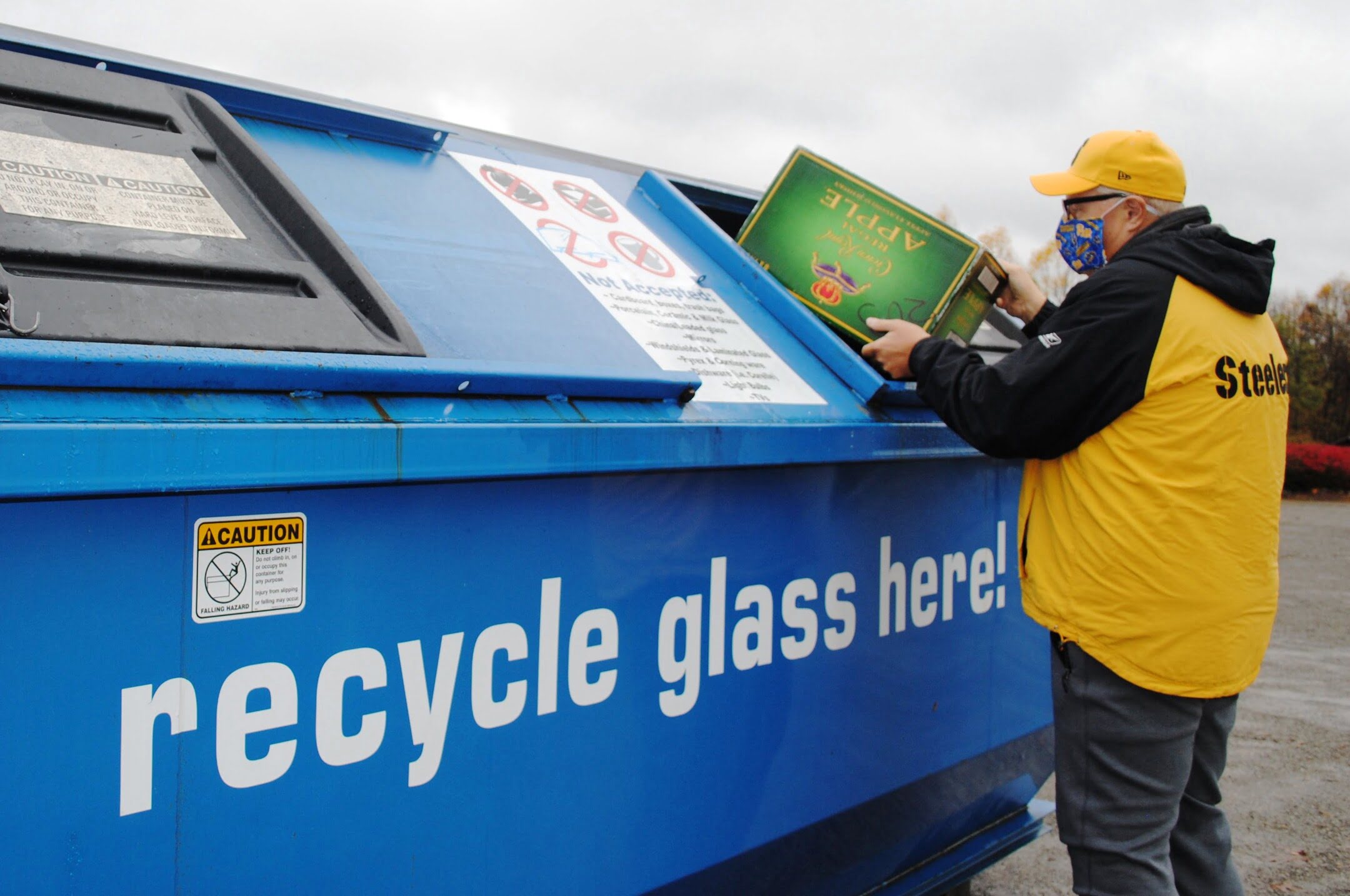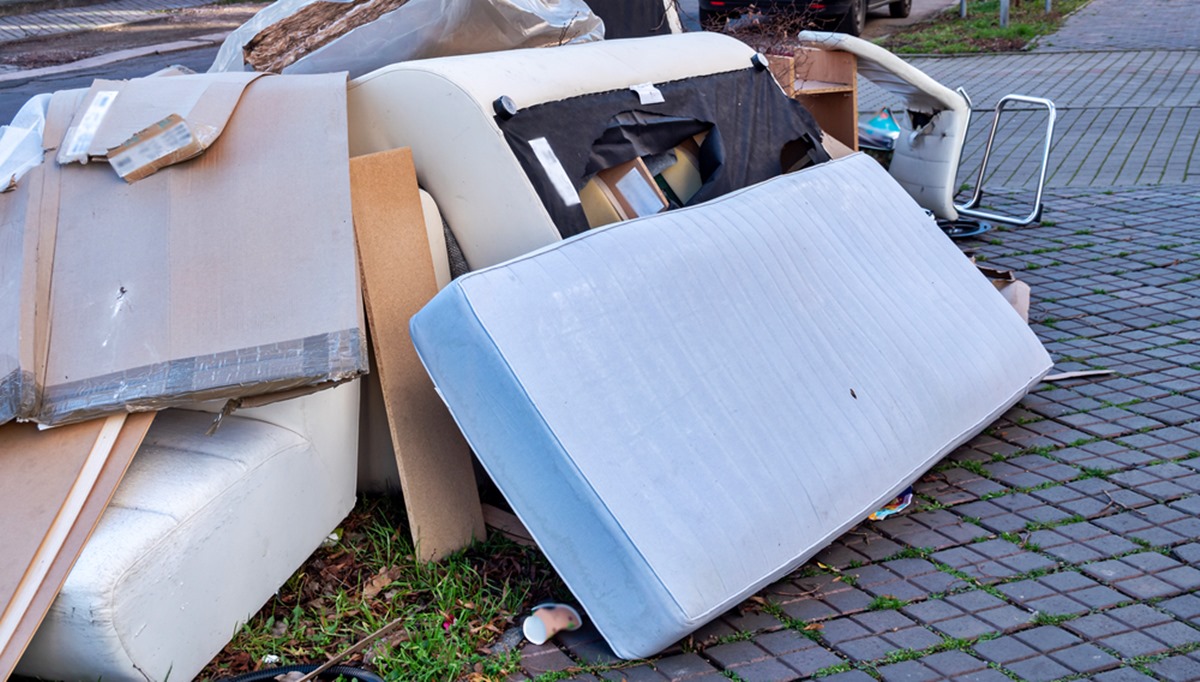Home>Interior Design>How To Dispose Of Paint: Safely And Conscientiously


Interior Design
How To Dispose Of Paint: Safely And Conscientiously
Modified: October 20, 2024
Learn how to dispose of paint safely and conscientiously with these interior design tips. Protect the environment while maintaining a beautiful space.
(Many of the links in this article redirect to a specific reviewed product. Your purchase of these products through affiliate links helps to generate commission for Storables.com, at no extra cost. Learn more)
Introduction
When it comes to home improvement projects, painting is a popular choice for sprucing up your living space. Whether you’re giving a room a fresh coat of paint or tackling a larger renovation project, it’s important to not only focus on the aesthetics but also consider the proper disposal of paint and its containers. Improperly disposing of paint can be harmful to the environment and can violate local regulations.
In this article, we will guide you through the best practices for disposing of paint safely and conscientiously. From understanding the different types of paint to checking local regulations and properly disposing of paint cans, we’ll cover everything you need to know to ensure you’re doing your part to protect the environment.
Before we dive into the details of paint disposal, it’s important to note that you should always try to reduce waste when possible. If you can avoid excessive paint usage by planning your projects carefully or by sharing leftover paint with friends or neighbors, it’s a win-win situation for both the environment and your wallet.
Now, let’s get started on the journey of responsible paint disposal.
Key Takeaways:
- Dispose of latex paint by drying it out and disposing of it with regular trash. Oil-based paint requires special handling and should be taken to designated recycling or hazardous waste facilities. Always check local regulations for proper disposal methods.
- Consider recycling or donating usable paint to reduce waste and benefit others. Properly dispose of paint cans and containers by recycling metal cans and following local guidelines for plastic containers. Clean paintbrushes and rollers to maintain their quality and prevent paint residue from entering the water system.
Read more: How To Safely Dispose Fluorescent Tubes
Step 1: Understanding Different Types of Paint
Before you can properly dispose of paint, it’s essential to understand the different types of paint that exist and how they should be handled. The two most common types of paint are latex (water-based) paint and oil-based paint.
Latex Paint: Latex paint, also known as water-based paint, is the most commonly used paint for interior and exterior surfaces. It is easy to clean up with soap and water, making it a popular choice among homeowners. Latex paint is typically not considered hazardous and can be disposed of in regular trash after it has been dried out.
Oil-Based Paint: Oil-based paint, on the other hand, is more durable and often used for high-traffic areas or surfaces that require superior adhesion. However, oil-based paint contains hazardous substances, such as solvents and heavy metals, which require special handling. These paints cannot be disposed of in regular trash and must be taken to specific recycling or hazardous waste facilities.
When determining the type of paint you need to dispose of, it’s essential to check the label on the paint can or container. The label will indicate whether the paint is latex (water-based) or oil-based. If the label is not clear or missing, you can perform a simple test to determine the type of paint. Dip a cotton swab in rubbing alcohol and rub it on a small area of dried paint. If the paint smears, it is likely latex; if it doesn’t, it is probably oil-based.
By understanding the different types of paint and their disposal requirements, you will be better prepared to handle them responsibly and ensure the safety of the environment.
Step 2: Checking the Local Regulations
Before you dispose of paint, it’s crucial to familiarize yourself with the local regulations regarding paint disposal. Different regions have specific guidelines and requirements for getting rid of paint, and it’s essential to abide by these rules to avoid potential fines or harm to the environment.
Start by reaching out to your local municipal office or waste management department to inquire about the regulations in your area. They can provide you with valuable information on how to handle and dispose of paint properly.
In some regions, you may be required to dry out latex paint before disposing of it, while in others, you may need to take it to designated drop-off locations. Similarly, there may be restrictions on disposing of oil-based paint, as it is considered hazardous waste due to its harmful chemicals.
When contacting your local authorities, make sure to ask about any specific guidelines regarding quantities of paint that can be disposed of, as well as any special instructions for recycling or hazardous waste facilities.
Additionally, it’s worth checking if your community has any paint recycling programs or collection events. These initiatives aim to divert paint from landfills and encourage responsible disposal. They often provide a convenient and environmentally-friendly option for getting rid of paint.
By understanding and following the local regulations, you can ensure that you dispose of paint in a manner that is compliant and eco-friendly.
Step 3: Drying Out Latex Paint
Properly drying out latex paint is an important step in its disposal process. When paint is completely dried, it is considered solid waste and can be disposed of with your regular trash. Here are some simple steps to help you dry out latex paint:
- First, assess the amount of paint remaining in the can. If there is only a small amount, less than an inch, it may be easier and more efficient to let it dry naturally rather than following the alternative methods.
- If you have a larger amount of latex paint, start by removing the lid and checking for any solid chunks or dried paint on the surface. Use a paint stirrer or a stick to break up and mix any solids into the liquid paint.
- Once the paint is well mixed, you can speed up the drying process by adding an absorbent material. Common household items such as shredded newspaper, kitty litter, or sawdust work well for this purpose. Slowly pour a small amount of the absorbent material into the paint and stir until it reaches a thick, pasty consistency.
- Spread the paint mixture in a thin layer on a non-absorbent surface such as cardboard or plastic. Ensure that it is spread evenly to expedite the drying process.
- Place the cardboard or plastic with the paint mixture in a well-ventilated area away from children and pets. The paint will begin to dry as the liquid evaporates from the mixture.
- Allow the paint to dry completely. Depending on the amount of paint and the environmental conditions, this can take several hours to a few days. Check periodically to ensure the paint is dry and hardened.
- Once the paint is completely dry, it can be safely disposed of with your regular trash. However, make sure to place it in a separate bag and label it as “dried paint” for easier identification by waste collectors.
By following these steps and properly drying out latex paint, you can responsibly dispose of it without causing harm to the environment.
Step 4: Disposing of Oil-Based Paint
Disposing of oil-based paint requires extra caution due to its hazardous nature. It contains harmful chemicals and toxins that can contaminate the environment if not handled properly. Follow these steps to dispose of oil-based paint safely:
- Assess the amount of oil-based paint you need to dispose of. If there is only a small quantity, try to minimize waste by using it up or sharing it with others who may need it.
- Check with your local waste management facility or municipal office to find out the specific regulations and recommendations for oil-based paint disposal in your area. They may provide drop-off locations or collection events for hazardous waste materials.
- Ensure the paint cans are securely closed to prevent spills or leaks during transport. Use duct tape or plastic wrap to seal the lids tightly.
- Transport the cans of oil-based paint to the designated drop-off location or hazardous waste facility. Be sure to follow any packaging or transportation guidelines provided by the facility.
- When dropping off the paint, make sure to inform the facility staff that you are disposing of oil-based paint. They will guide you on the proper procedures and ensure the paint is handled correctly.
- Do not pour oil-based paint down the drain or dispose of it with your regular trash. Improper disposal can contaminate water sources or harm waste management workers.
Remember, oil-based paint should never be burned, as it releases toxic fumes and pollutants that can be harmful to both human health and the environment.
By following these steps and consulting with your local authorities, you can dispose of oil-based paint responsibly and prioritize the safety of your community and the environment.
When disposing of paint, check with your local waste management facility for guidelines. Consider donating usable paint to a community organization or using a paint hardener to solidify it before disposal.
Step 5: Recycling or Donating Usable Paint
If you have usable paint that you no longer need or want, consider recycling or donating it rather than disposing of it. Recycling or donating paint is a sustainable option that can help reduce waste and benefit others. Here’s how you can recycle or donate usable paint:
Recycling:
- Check if there are any paint recycling programs available in your community. These programs are designed to collect and recycle leftover paint.
- Look for paint recycling drop-off locations or collection events in your area. These facilities often accept unused or unwanted paint for proper recycling.
- Ensure that the paint cans have a good seal to prevent leaks during transport. If necessary, place plastic wrap or a plastic bag around the lid and secure it with tape.
- Take the paint cans to the designated recycling facility or drop-off location. Follow any specific instructions provided by the facility.
Donating:
- Check with local community organizations, schools, or charities if they accept donations of usable paint.
- Ensure that the paint is still in good condition and has not expired. Open the can to check for any signs of spoilage, such as a strong odor or separated layers.
- If the paint is suitable for donation, contact the organization or charity to arrange for drop-off or pick-up.
- Remember to provide accurate information about the paint, including the color, quantity, and expiration date.
By recycling or donating usable paint, you not only help the environment but also contribute to community projects and initiatives. It’s a win-win situation that reduces waste and benefits those in need.
Step 6: Proper Disposal of Paint Cans and Containers
Once you have disposed of the paint itself, it’s important to properly handle and dispose of the paint cans and containers. Here are some guidelines to ensure their proper disposal:
- Allow the empty paint cans or containers to dry completely. Leave the cans open in a well-ventilated area until all the residual paint and fumes have evaporated.
- Once the paint cans are dry and empty, they can be recycled as scrap metal. Check with your local recycling facility or waste management department for guidelines on recycling metal cans.
- If the cans are made from plastic, check if they are recyclable in your area. If so, rinse them out to remove any remaining paint and place them in your recycling bin according to local guidelines.
- In some cases, the paint cans may still have a small amount of dried paint or residue left. Scrape out any remaining paint using a paint scraper or similar tool.
- If you have a large number of paint cans and they are not suitable for recycling, contact your local hazardous waste facility for proper disposal instructions or drop-off locations.
- Never dispose of paint cans or containers with your regular trash or pour any remaining paint down the drain. This can cause environmental pollution and potential harm to waste management workers.
Remember, properly disposing of paint cans and containers ensures that they do not end up in landfills or contribute to pollution. By following these steps, you can contribute to a cleaner and safer environment.
Step 7: Tips for Cleaning Paintbrushes and Rollers
After completing your painting project, it’s important to properly clean your paintbrushes and rollers to maintain their quality and extend their lifespan. Cleaning paintbrushes and rollers not only helps you reuse them for future projects but also prevents paint residue from entering the water system. Follow these tips for effective cleaning:
- Start by scraping off any excess paint from the brush or roller using a putty knife or similar tool. This step helps remove as much paint as possible before cleaning.
- Rinse the brush or roller with running water to remove any remaining paint. For water-based latex paint, continue rinsing until the water runs clear. For oil-based paint, use mineral spirits or paint thinner for cleaning.
- For heavily soiled brushes or rollers, you can use a brush cleaner or solvent specifically designed for paintbrushes. Follow the instructions on the product and rinse thoroughly afterward.
- Use a mild soap or detergent to wash the bristles or nap of the brush or roller. Gently rub the bristles together or roll the roller back and forth to remove any remaining paint particles. Rinse thoroughly with water.
- Inspect the brush or roller for any remaining paint residue. If necessary, repeat the cleaning process until the bristles or nap are completely clean.
- Once the brushes or rollers are clean, allow them to air dry completely in a well-ventilated area. Avoid using excessive heat or direct sunlight, as it can damage the bristles or nap.
- Store the cleaned brushes and rollers properly to maintain their shape and prevent damage. Hang brushes or store them with the bristles facing up, and store rollers in their original packaging or in a clean, dry place.
By following these tips, you can effectively clean your paintbrushes and rollers, ensuring their longevity and reducing waste.
Step 8: Conclusion
Proper disposal of paint is essential for the environment and our communities. By following the steps outlined in this guide, you can ensure that you dispose of paint safely and conscientiously. Understanding the different types of paint, checking local regulations, drying out latex paint, disposing of oil-based paint correctly, and recycling or donating usable paint are all crucial steps in the process.
Remember to always check the label on the paint can to determine its type and follow the instructions provided. Additionally, reach out to your local waste management department or municipal office for specific guidelines and regulations in your area. By abiding by these regulations, you can avoid fines and contribute to a cleaner environment.
Cleaning your paintbrushes and rollers properly is not only important for their longevity but also to prevent paint residue from entering the water system. Following the tips outlined in this guide will help you clean your tools effectively and maintain their quality for future projects.
Lastly, don’t forget to dispose of paint cans and containers appropriately. Empty cans can often be recycled as scrap metal, while plastic containers may be recyclable depending on your area’s guidelines. If in doubt, contact your local recycling facility or hazardous waste disposal center for guidance.
By taking the time to educate yourself on proper paint disposal and implementing these steps, you can contribute to a cleaner and healthier environment. Responsible paint disposal is not only crucial for our planet but also a way to show respect for our communities and future generations.
So, the next time you embark on a painting project, remember to think beyond just the color on the walls, and consider the impact of your actions. With a little effort and awareness, you can make a big difference in preserving our environment while enjoying the beauty of freshly painted spaces.
Frequently Asked Questions about How To Dispose Of Paint: Safely And Conscientiously
Was this page helpful?
At Storables.com, we guarantee accurate and reliable information. Our content, validated by Expert Board Contributors, is crafted following stringent Editorial Policies. We're committed to providing you with well-researched, expert-backed insights for all your informational needs.















0 thoughts on “How To Dispose Of Paint: Safely And Conscientiously”